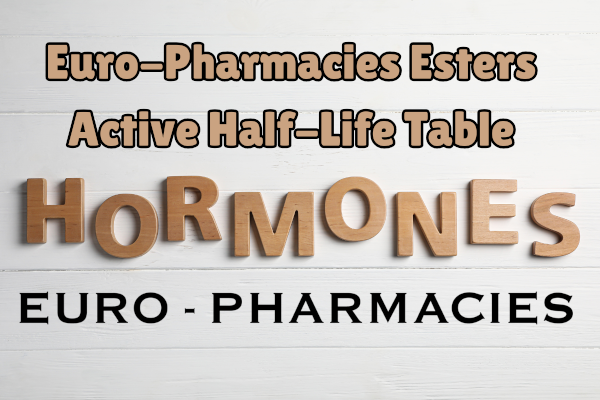Esters are like the spice of the chemical world—they come in all shapes and sizes, giving compounds their unique flair. But when it comes to figuring out how long these compounds stay in our bodies, things can get a little murky.
You see, there’s a lot of conflicting information out there about the half-life of different compounds. Some sources don’t even bother to cite their sources! It’s like trying to navigate a maze blindfolded.
But fear not, dear reader! We’re here to shed some light on the subject. When it comes to esters, we’re only interested in the terminal half-life – that’s the time it takes for a substance to lose half of its activity. Think of it as the chemical equivalent of hitting the snooze button.
So, if you’re curious about how long your favorite compound will be hanging around, look no further. We’ve got all the juicy details on terminal half-life right here. Let’s dive in and unravel the mysteries of esters together!
Vital Reminder:
These Esters Active half-lives are estimates and may vary slightly based on the injection site, carrier oil, and other factors. Unfortunately, there haven’t been many pharmacokinetic studies done on the majority of AAS. So, most of what we know about half-lives is just theoretical mumbo jumbo until we get some real data.
Esters and the Active Dose
Let’s talk about the fancy stuff – esters!
When you inject an anabolic steroid, the ester attached to it makes up a percentage of the total molecular weight of the molecule. So, if you think you’re getting 100mg of pure Testosterone Enanthate, think again. You’re getting less Testosterone than you bargained for because of that sneaky ester. Once the esterase enzyme removes the ester, the amount of pure un-esterified Testosterone leftover varies depending on the ester that was previously attached.
Long-chain esters like Cypionate, Decanoate, and Enanthate are heavy hitters when it comes to molecular weight. This means that on a mg-for-mg basis, you’re getting more steroids in a short-term compound than in a long-entered one. For example, there’s more Testosterone in 100mg of Testosterone Propionate than in 100mg of Testosterone Enanthate. Why? Because the Propionate ester is lighter than the Enanthate ester. It’s like comparing a feather to a brick!
So, next time you’re deciding which ester variant to use during a cycle, remember to factor in the weight of those esters. It’s a small detail that can make a big difference in your gains.
The half-life of various esters in anabolic steroids determines how long they remain active in the body. The terminal half-life refers to the time it takes for the concentration of the ester to decrease by half.
Here is a breakdown of the half-life and terminal half-life of different esters commonly found in anabolic steroids:
– Acetate: Half-life of 3 days, terminal half-life of 1 day
– Propionate: Half-life of 2 days, terminal half-life of 0.8 days
– Phenylpropionate: Half-life of 4.5 days, terminal half-life of 1.5 days
– Butyrate: Half-life of 2-3 days
– Valerate: Half-life of 3 days
– Hexanoate: Half-life of 3 days
– Caproate: Half-life of 4-5 days
– Isocaproate: Half-life of 9 days, terminal half-life of 4 days
– Heptanoate: Half-life of 5-6 days
– Enanthate: Half-life of 10.5 days, terminal half-life of 4.5 days
– Cypionate: Half-life of 6-7 days, terminal half-life of 5 days
– Octanoate: Half-life of 6-7 days
– Nonanoate: Half-life of 7 days
– Decanoate: Half-life of 15 days, terminal half-life of 7.5 days
– Undecylenate: Half-life of 8-9 days, terminal half-life of 14 days
– Undecanoate: Half-life of 16.5 days, terminal half-life of 20.9 days
The following table displays the percentages of the actual hormones for each ester:
Ester % Of The Actual Hormone
Acetate 87%
Propionate 80%
Phenylpropionate 66-67%
Isocaproate 72%
Enanthate 70%
Cypionate 69%
Decanoate 62%
Undecylenate 61%
Undecanoate 61%
These percentages represent the concentration of the hormone within each ester. It is important to consider these values when selecting the appropriate ester for a specific application.
Understanding the half-life and terminal half-life of these esters is crucial for determining the dosing frequency and timing of anabolic steroid cycles.

